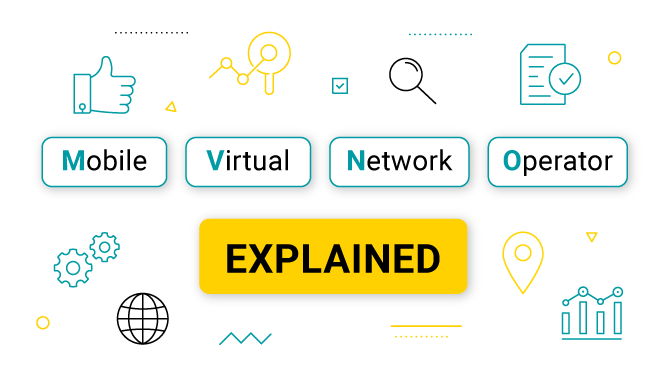How to Invest in Customer Service in Ways That Will Pay Off
Bad customer service will cost you customers. It will also cost you a good reputation and profits. So, it’s safe to say that although exemplary customer service requires investments, the risks involved are much more likely to give you rewards.
To stay on top of your customer service game, you should prioritize customer retention. As per Bain & Company, a 5% increase in customer retention produces over 25% increase in profit. If you need some more convincing, take this: Esteban Kolsky, the founder of thinkJar, surveyed business owners across industries and found out that it costs companies 6-7 times more to attract a new customer than to keep the existing one.
The question remains — how much should you invest in your customer support team including the number of staff, the tools used for training, and training for offering exceptional customer service?
While there isn’t a one-size-fits-all budget, you can calculate how much you’re able to realistically spend on your customers by using the already existing in circulation data. Call it ROI of customer service or a financial plan aimed at improving the customer experience you provide, the point is to create a blueprint that would help measure customer service efforts and achieve your company’s financial goals faster.
Here are the 3 simple steps you can follow to ensure that your customer service continuously drives sales no matter how many tweaks in your business strategy you make along the way.

1. Identify the metrics you’ll be evaluating on monthly or quarterly basis
Aside from figuring out how much money you should allocate to new hires, training, and equipment — which isn’t a hefty task — it’s just as (if not more) important to establish how much money customer service earns you. This can be tricky when you don’t have all the relevant metrics on hand.
To make smart investments that will pay off, it pays to know what return rate you can expect. But since there isn’t a single ROI-type indicator to measure, consider keeping a close eye on the following metrics:
- The cost of acquiring a customer (CAC). This includes the costs associated with your marketing team, sales team, and every expense under the sun like creative, technical, production, and inventory. Every dollar you spend on acquiring a customer falls under this category. It’s one of the biggest expenses and makes up anywhere between 25% and 35% of the total customer lifetime value.
- The cost of customer retention. Similar to CAC, customer retention cost consists of marketing efforts, but in this case, they are aimed at appealing to the existing customers. It also includes staffing costs, customer training programs, tools and software, and customer loyalty programs.
- The cost of activation. These are the expenses related to onboarding new customers, educating them on the products and services you offer, and creating an extensive knowledge base.
- Referral revenue. When your customer tells about your company to his friends and family — and they choose to do business with you — the revenue you get as a result is known as referral revenue. In a nutshell, it’s any extra earnings you receive from a customer that go above his original monthly spend.
- Recurring revenue. This is a portion of the revenue that’s expected to occur again in the future. In contrast to one-time purchases, recurring revenue is always easy to predict (ex. subscriptions).
Once you determine every one of these customer service metrics per customer, you should have no issues working out the amount you need to be investing.
2. Set your expectations right from the start by making simple calculations
It’s easy to overestimate or underestimate how much you should invest in customer service to get a good return. Even with all the numbers at hand, there’s still a chance that you’ll misinterpret the final amount. Here’s where formulating a hypothesis and making a few simple calculations will come in handy.
To structure your hypothesis, use the following template:
“Our customers are based in X and our products/services are distributed in Z. We’ve registered the biggest number of sales in Y and are now expecting to add a few more service reps to Y. This should improve our customer satisfaction score by X times and allow us to increase the customer retention rate by X times.”
As for calculations, try to incorporate as many customer service metrics mentioned above as possible. You can play around with these formulas:
“Return on Investment (ROI) = [(Revenue – Expenses)/Expenses] x 100”
“(Referral Revenue + Recurring Revenue)/CAC = Lifetime Value/CAC Ratio”
“Breakeven Point = (Referral Revenue + Recurring Revenue) – (Activation Cost + Acquisition Cost + Retention Cost)”
To formulate the most accurate hypothesis and make calculations that would deliver sizeable results, have a few brainstorming sessions with your customer service team. Gather as much data as you can and determine what pain points should be worked on.
3. Experiment and learn from gathered data
Don’t expect the initial hypothesis and calculations to work without any tests and modifications. There’s a learning curve to go through before arriving at just the right investment number. You’ll get a clearer idea of how much you should invest by experimenting with the wording of the hypothesis and including more metrics or excluding the ones that don’t make sense.
You might, for instance, conclude that the number of customer service representatives in X country should be reduced. Or, say, that it’d be a smart financial move to invest more efforts and funds into your referral programs so that the existing customers are more eager to shout about your company from the rooftops. Before you’ll decide on the long-term investment, make a few short-term stakes and see how far they’ll go.
Prioritize delivering exemplary customer service and the rest will fall into place
Before investing any money into customer service, you should think long and hard about the non-financial efforts you’re investing to make it stand out. Is there a customer service philosophy that everyone upholds on a daily basis? Are the goals you set for your customer service team clear and easy to understand? Do you cater to a buyer’s persona and are quick to get back to your customers within 24 hours?
Throwing money into something you haven’t taken the time to explore and learn won’t give you the results you’re waiting for. You should be hiring more customer service staff, conducting training, and investing in tools that help deliver the best service only after you’ve fully understood the needs and wants of your customers. Then, and only then you can shift the focus to measuring customer service indicators and making them work for you.

















